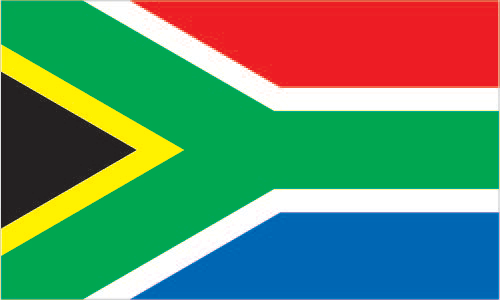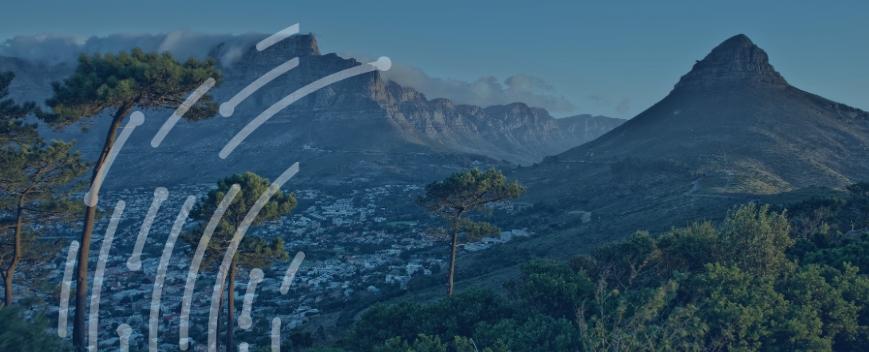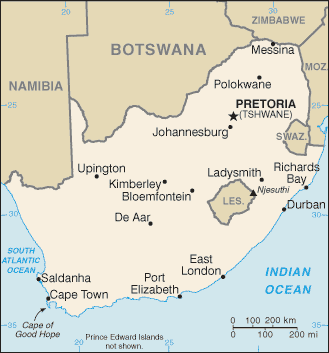Exporting to South Africa


South Africa Country Profile
Official Name (Local Language) The Republic of South Africa
Capital Pretoria
Population 54,300,704
Currency South African Rand
GDP $280.4 billion
Languages Afrikaans
Phone Dial In 27
South Africa Imports Profile
Imports ($m USD) 83,031
Number of Import Products 4,452
Number of Import Partners 229

South Africa Economic Statistics
Government Website | https://www.gov.za/ |
| Sovereign Ratings | https://countryeconomy.com/ratings/south-africa |
| Central Bank | South African Reserve Bank |
| Currency USD Exchange Rate | 15.7 |
| Unemployment Rate | 26.8% |
| Population below poverty line | 16.6% |
| Inflation Rate | 6.5% |
| Prime Lending Rate | 5.75% |
| GDP | $280.4 billion |
| GDP Pro Capita (PPP) | $13,500 |
| Currency Name | South African Rand |
| Currency Code | ZAR |
| World Bank Classification | Upper Middle Income |
| Competitive Industrial Performance | 47/138 |
| Corruption Perceptions Index | 71/180 |
| Ease of Doing Business | 82/190 |
| Enabling Trade Index | 55/136 |
Access trade, receivables and supply chain finance
We assist companies to access trade and receivables finance through our relationships with 270+ banks, funds and alternative finance houses.
Get StartedExporting to South Africa
South Africa is Africa’s biggest economy and an important trading hub for the region. South Africa’s most important imports are crude and refined oil, machinery, and transportation, especially cars and trucks; its main import partners are China, Germany, India, and the US. South Africa is completely dependent on imported petroleum, which it needs for its industrial sector and which local production only provides a fraction of. The country also imports the majority of its medical appliances and aircraft parts. It is both a significant importer and exporter, and has a small but consistent positive trade balance.
South Africa is one of the most unequal countries in the world, with over half the population living under the poverty line despite its relatively high GDP and persistently high unemployment. Internal turmoil can make it difficult to trade goods: while no explicitly protectionist policies are in place, non-tariff barriers can be significant hindrances. For example, port congestion, overly high customs valuations, corruption, and theft of goods can make exporting goods to South Africa complex on occasion. However, agreements with economic unions such as the EU and the Southern African Development Communities have made trade between member states and South Africa smoother and lowered tariffs. A new government was elected in early 2024, putting the economically liberal party Democratic Alliance in power for the first time ever. Their policies of fiscal responsibility and increased privatisation of state companies could boost investor sentiment; however, this may be offset by the negative impact of organised crime activities like kidnappings and robberies.
South African infrastructure is a significant issue for the economy: its large container harbours, crucial both for international imports and regional trade, consistently score among the worst in the world in global rankings and are affected by breakdowns, inefficiency, and congestion. This can cause extended delays and increased costs for shipping companies. The new government has pledged a crisis committee to tackle the most urgent issues, which should ease the pressure on shipping companies and facilitate imports via sea. South Africa is a member of the African Continental Free Trade Agreement, into effect since January 2024, which allows free trade from signatories and is expected to bolster intra-African trade and international investment.
Exporting to South Africa: What is trade finance?
The top exports from South Africa in terms of value, are gold (around $20B), diamonds (around $9B), platinum (around $7B), coal (over $6B) and iron ore (over $5B). In terms of the country of export, the main countries are China (around $10B), United States ($8B), the UK (around $8B), India ($7B) and Hong Kong ($8B).
Geographically, South Africa sits on the borders of Lesotho, Botswana, Mozambique, Zimbabwe, Namibia and Swaziland. South Africa is the world’s third largest exporter of coal and in terms of production, South Africa is one of the main producers of gold; also being the largest producer of manganese, chrome, vanadium, platinum and vermiculite. It also ranks second in terms of production with commodities such as palladium, rutile and vermiculite. They also export fruits, corn, wool and sugar. The export value in South Africa averaged around 14000 ZAR Million from 1957 until 2015, reaching a height of around 94000 ZAR Million at the end of 2015 and a low of around 55 ZAR Million at the end of 1958.
Chart Showing GDP Growth Compared to rest of world
GDP Composition for South Africa
Agriculture
2.2%
Corn, wheat, sugarcane, fruits, vegetables; beef, poultry, mutton, wool, dairy products
Industry
29.2%
Mining: platinum, gold, chromium; automobile assembly, metalworking, machinery, textiles, iron and steel, chemicals, fertilizer, foodstuffs, commercial ship repair
Services
68.7%
Transportation Travel Other business services Royalties and license fees Computer and information services Financial services Government services Cultural and recreational services Construction services
Map
Top 5 Import Partners
| Country | Trade | % Partner Share |
| China | 15,224 | 18.34 |
| Germany | 9,555 | 11.51 |
| United States | 5,486 | 6.61 |
| India | 3,915 | 4.71 |
| Saudi Arabia | 3,842 | 4.63 |
Top 5 Import Products
| Export Product | Number |
| Petroleum oils and oils obtained from bituminou | 7.7% |
| Petroleum oils, etc, (excl. crude); preparation | 5.4% |
| Transmission apparatus, for radioteleph incorpo | 4.8% |
| Other medicaments of mixed or unmixed products, | 3.5% |
| Automobiles with reciprocating piston engine di | 2.2% |
Local Partners
- All Topics
- South Africa Trade Resources
- Export Finance and ECA Topics
- Local Conferences



















